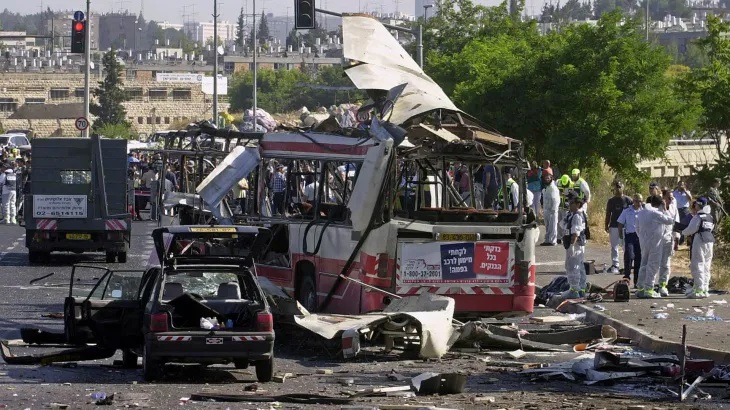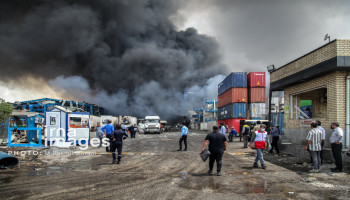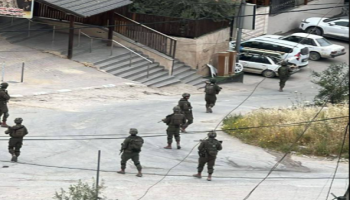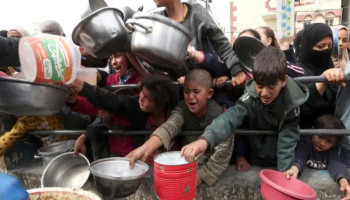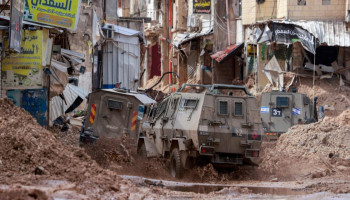Day by day, Palestinian fedayeen operations are intensifying within the depths of the Israeli entity, creating a nightmare that disrupts its calculations, foils its intelligence capabilities, and exposes its fragile security. Across the West Bank, including occupied Quds, there has been a significant surge in resistance operations targeting Zionist soldiers and settler groups. These actions, encompassing shootings, vehicle rammings, stabbings, and attacks on military posts and settlements, have marked the deaths and injuries of dozens of Zionists, with at least 50 Zionists killed since the onset of the recent genocidal aggression on Gaza.
On Sunday, a powerful ramming operation near the Israeli occupation's military base of Glilot, north of occupied Yaffa, marked one of the most impactful attacks since the aggression began on October 7, 2023. This operation left six Israeli adversaries dead and injured 50 others. Notably, it was conducted close to a military base housing the entity's intelligence headquarters, including Mossad and Unit 8200, part of the military’s intelligence branch.
Only hours after this incident, the entity's police reported another attempted ramming targeting soldiers near the village of Hizma in the occupied West Bank.
These types of unorganized individual fedayeen actions also manifest in Palestinian resistance to Israeli military invaders in occupied areas, often by previously implanting improvised explosives and other means of resistance.
According to official Palestinian statistics, the West Bank saw 168 shootings, four rammings, stabbings, and 130 instances of explosive and incendiary devices targeting Zionist adversaries last September.
The Palestine Information Center (Maata) has reported 63 significant operations since the Gaza offense began, including 23 vehicle rammings, 40 stabbings, and 1,840 shootings, resulting in 50 adversaries and occupying settlers killed and 379 injured.
Recently, the entity's army revealed that since the conflict’s eruption on October 7 last year, over 26,000 projectiles have targeted Israel, including 13,200 from Gaza, 12,400 from Lebanon, 400 from Iran, 180 from Yemen, and 60 from Syria.
Individual operations carried out by young Palestinians have emerged as a significant challenge for the Israeli entity, whose brutal and genocidal actions against Palestinians have, in turn, become fuel for these operations. The political and security shifts after the al-Aqsa Flood have revived individual fedayeen operations, rais concerns over a resurgence of sacrifice attacks targeting Israeli-occupied areas of commercial areas, buses, and entertainment sites. This fear has intensified following a truck bombing in occupied Yaffa on August 18, claimed by Hamas' armed wing, the al-Qassam Brigades.
Moreover, there has been an increase in fedayeen actions from the long eastern border with Israel, with Jordanian youth initiating operations. One example is the attack at the King Hussein Bridge Border Crossing, carried out by martyr Maher al-Jazi on September 8, and another at the Dead Sea on October 18 by martyrs Hossam Abu Ghazaleh and Amer Qawas. These events have triggered new fronts, which Israeli authorities have long feared.
Sayyid Abdul-Malik Badruldeen al-Houthi recently praised the heroic fedayeen action by Jordanian martyr Maher al-Jazi, saying, “The heroic operation of martyr Maher Diab al-Jazi reflects the sincere support for Palestine within the Jordanian people,” highlighting its considerable impact on the enemy despite its individual nature and modest means.
The Palestinian resistance appears to have achieved a “balance of deterrence” following the "Tel Aviv " operation, impacting Israeli security and leaving illegal settlers feeling vulnerable. Regardless of its specifics, this operation signals the return of fedayeen actions to occupied cities, alarming the Israeli entity’s security and intelligence apparatus and reviving the atmosphere of fear among settlers who once believed their cities, including occupied Yaffa were secure.
The fedayeen actions within the Israeli occupation date back to Hamas’ first official operations in retaliation for the Hebron massacre on February 25, 1994, by the extremist Baruch Goldstein, who killed 29 Palestinian worshippers at the Ibrahimi Mosque. Hamas' first fedayeen operation followed in occupied Yaffa on October 19, 1994, when a bus bombing on Dizengoff Street left over 20 Israelis dead and 104 injured.
By the late 1990s, Hamas and other Palestinian factions had expanded their fedayeen operations, opposing the Oslo Accords. This form of resistance, peaking between 2000 and 2005 with 135 operations, including 54 by Hamas, became the main weapon of Palestinian factions.
The Israeli entity has witnessed numerous high-impact fedayeen operations since 2000.
The rise in Palestinian fedayeen operations has escalated concerns within Israel’s security services. According to the entity's intelligence agency Shin Bet, Palestinian operations in 2022 increased significantly, with 1,933 incidents in the West Bank, up from 1,570 in 2021, resulting in 29 Israeli adversaries and illegal settlers killed and nearly 128 injured.
As the situation continues to evolve, these developments underscore the relentless challenges facing the entity's security in the face of Palestinian resistance, which continues to push against all odds.

